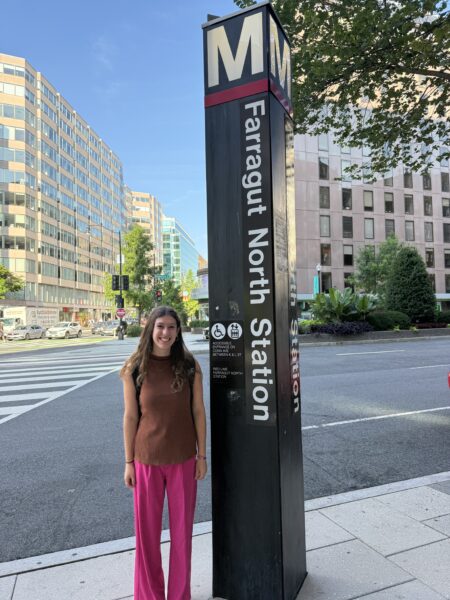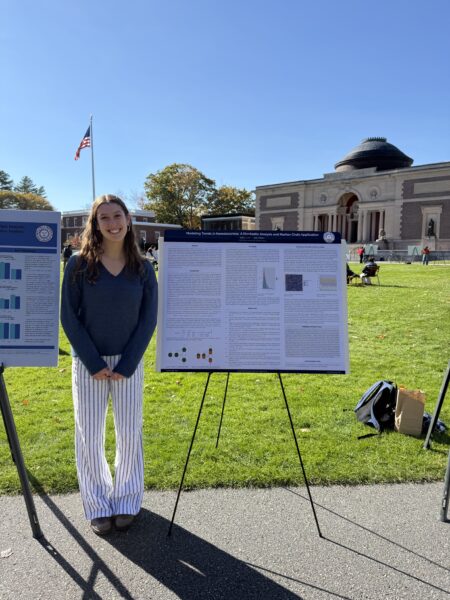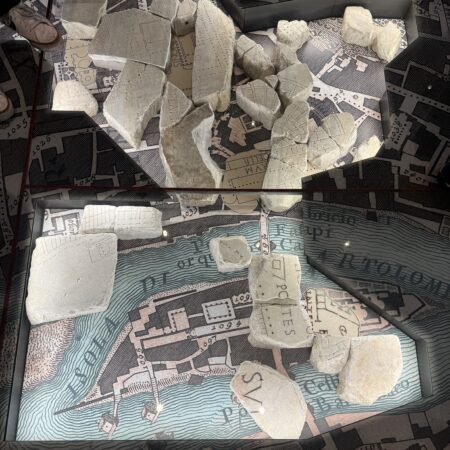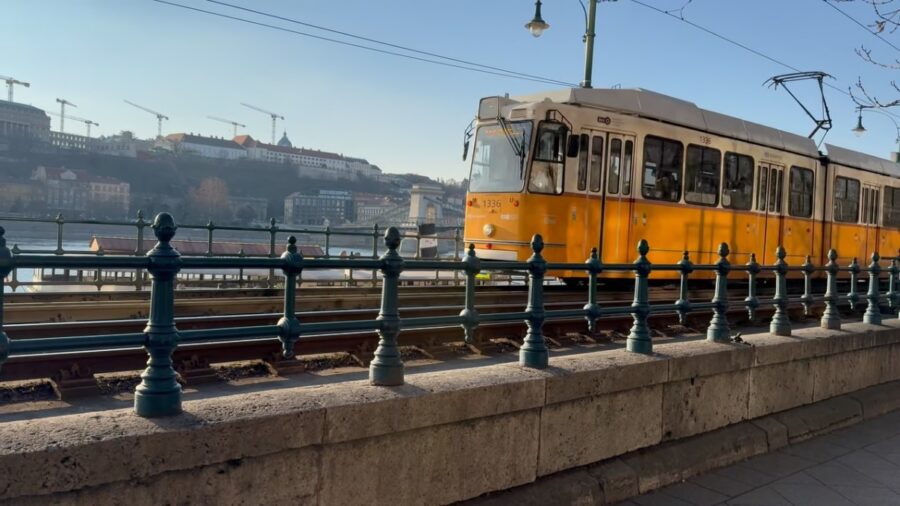
At the beginning of June, I started what would be a 10-week-long internship at Foursquare ITP. As a math and history double major from Bowdoin College, a small liberal arts school in Brunswick, Maine, I was thrilled to explore transportation planning in a more formal setting than I had been exposed to in the past. While Bowdoin has urban studies courses that I’ve taken advantage of, my exposure to transportation planning has been limited to the conceptual understanding of transportation’s role in larger urban ecosystems. Foursquare ITP’s innovative mission and diverse expertise really interested me because I wanted to learn how transportation worked more hands-on. As I got off at the Farragut North Metro stop on my first day, I was excited for the bus load (get it? bus load? ha!) of new experiences I knew were coming my way.
From Campus to Community
On my college campus, up north in Maine, my studies focus on applying mathematical modeling to urban systems. My history coursework, while ranging over time periods and geographic regions, encourages me to think critically about urban developments, facilities, and communities. Specifically, I have taken courses on the development of cities, including Chicago, New York, London, Paris, Berlin, and Vienna. Through these case study explorations, I have developed a deep appreciation for the rich history of public systems that work to build bridges between communities by fostering equity and sustainability.

Before I began focusing on transportation specifically, I grew curious about housing policy, social housing histories, and the role those systems play in the larger urban landscape. In the summer of 2024, I worked for Bowdoin’s Math Department to pursue independent research on modeling the development of housing insecurity in Portland, Maine. Using theories and frameworks from my math coursework to uncover the realities of an urban issue I cared (and still care) deeply about opened the door to my excitement towards quantitative thinking in social fields more generally. This coming school year, as a rising senior, I will continue to explore housing access through my math department honors project. However, instead of focusing on Portland, I will take over an existing project to apply geospatial and demographic analyses to various eviction cases passed through the Boston court system.
While passionate about housing, I wanted to continue exploring other ways to utilize quantitative thought in urban landscapes. Despite always considering transportation to be a vital part of urban and suburban life—I took Boston’s MBTA 76 bus home from my suburban high school every day
—it took me a bit more time to realize that transit planning was another field that adopted the same critical quantitative thought and creative solution-building that I loved exploring through housing analysis.
Rome-ing Around: Finding Direction Through Travel

This past January, I boarded a plane to Rome, where I spent the next four months taking coursework, learning Italian, and exploring architectural and geospatial histories of the vast city—an experience that dramatically deepened my excitement for land use analysis and transportation development. Here, I gained a new appreciation for the incredible history of cartography as I explored intricate maps dating back to Septimius Severus’ rule from 203-211 CE . These maps, while obviously not inclusive of complex rail systems, demonstrated a human desire to analyze space and uncover patterns in movement geographically. These two tenets have proven thematic in my exposure to the transportation planning world thus far.
While Rome’s Metro system development faces persistent halts due to the heaping sum of unexcavated underground ruins, I explored the city through the existing user-friendly three-line heavy rail system, complex bus network, and my own two dependable Blundstones. On weekends, I traveled to other European cities and experienced globally famous transportation networks. Each system, while unique in its headways, spans, and service areas, worked towards a common goal of urban harmony and movement accessibility. These experiences, and my growing love for bustling urban life, expanded my excitement towards social-system analysis and development beyond that of housing networks. I knew I needed to explore the planning process behind the intricate systems that enabled convenient, accessible, and sustainable movement throughout the hearts of countries all over
the world.
Project Work in Motion

The impressive planning, analysis, and care that I have been exposed to during my time at Foursquare ITP has only strengthened my excitement towards transportation planning and accessibility initiatives. The incredible range of Foursquare ITP projects has widened my understanding of transportation planning to a diverse set of methods that reach far beyond the systems I assumed “transit” referred to. Not only does Foursquare ITP work to develop buses, trains, microtransit, and active transportation systems, but we enact these systems with an incredible awareness of the social environments that these networks work to serve.
While I have worked on various projects over the past few weeks, two of my favorite projects involved systems local to the DC-Maryland-Virginia (DMV) area. I helped redevelop service standard analyses for the DMV Moves task force, a group that considers the existing service realities of numerous complex bus systems in the region. This project exposed me to key considerations of service planning, diverse agency needs, and financial limitations.
In addition to DMV Moves, I was thrilled to play an active role in the Washington Metropolitan Area Transit Authority (WMATA) Linking Incidents to Customers (LINC) project. This initiative works to link incidents on the DC Metro to customers in a variety of ways. I focused on redeveloping train dwell thresholds that would determine excess dwell—or hold time—in the WMATA system. This project was a rewarding experience: not only did my threshold suggestions get adopted into the larger model, but I was able to concretely see how so many of the mathematical skills I developed in school—and applied to my work in housing analysis—could play a meaningful role in transportation planning. I developed the threshold analysis so that, instead of fixed thresholds applying to all systems, specific dwell thresholds would be dependent on passenger activity and the degree of technological implementation in each individual train.
Final Stop, Lasting Impact
Through my projects at Foursquare ITP, I have been so thankful to work alongside incredibly intelligent, thoughtful, driven coworkers. I have learned a lot from formal mentorship and collaboration during the past few months, but the more casual interactions I have had with employees throughout the company have been just as meaningful, too. The excitement towards individual projects, commitment towards bettering urban systems more broadly, and genuine care for the planning process that I have been exposed to at Foursquare ITP has only strengthened my commitment to this field. I am excited to continue exploring unique ways to improve transportation systems—one project at a time—to develop means to aid the diverse needs of the environments of today and tomorrow.
As my internship summer comes to a close, I am excited for the new ways I will be able to analyze and appreciate the transportation systems around me. These projects—ranging from light rail to bus bays to bike lanes—have taught me about the impressive impact of transportation planning and offers me a deeper understanding of my surrounding communities. Thank you to everyone at Foursquare ITP whom I have met this past summer and who has shown me the importance of careful analysis, creative problem-solving, and driven implementation. Your kindness and dedication have laid inspirational tracks in my own transit plan!